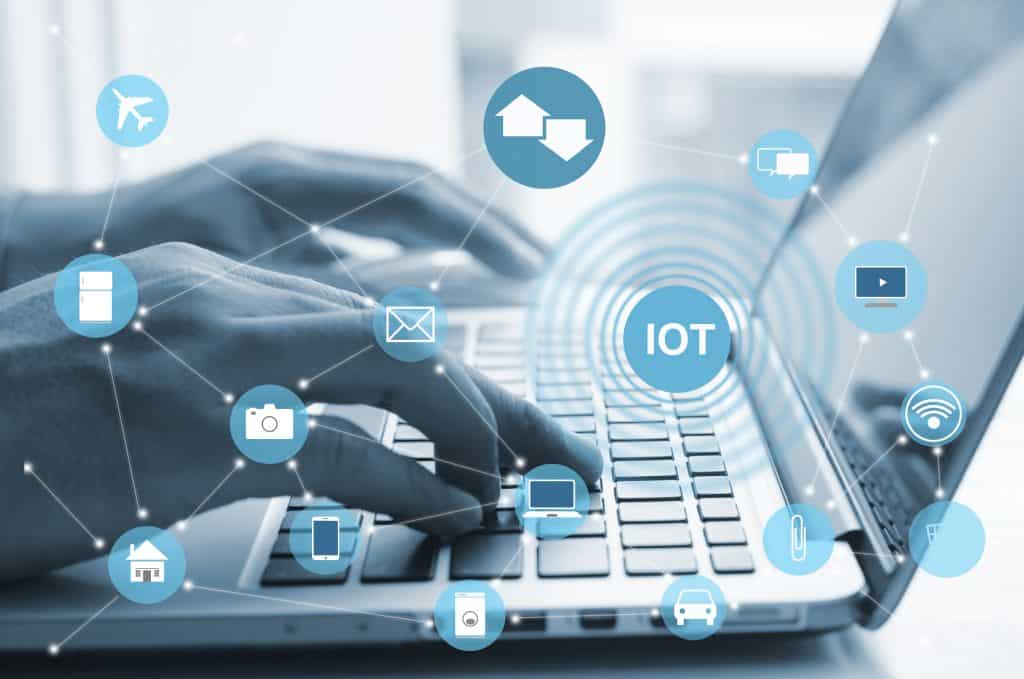Imagine a world where billions of devices – from factory machines and hospital monitors to home appliances and delivery trucks – are all connected and continuously sharing data. This is the reality of the IoT that is transforming business operations and strategy. Organizations across industries are deploying networks of smart, sensor-equipped machines to gather relevant insights. In doing so, businesses are unlocking business value. That means cost savings and new revenue opportunities.
Today, IoT’s growth is staggering. There were about 16.7 billion IoT-connected devices worldwide in 2023, up from 12 billion in 2021. Forecasts predict over 27 billion connected devices by 2025, as companies embed sensors and connectivity into an ever-wider array of products and assets. The market momentum is equally impressive – the global IoT market is on track to reach roughly $1 trillion in value by 2024. In light of this, forward-thinking enterprises are increasingly investing in Internet of Things app development to build custom IoT solutions that harness the deluge of data from connected gadgets. As one analysis noted, IoT provides entirely new ways to monitor and manage physical operations, yielding “massive new streams of data” that enable better decision-making and “immense value” across sectors ranging from retail and healthcare to manufacturing. In essence, the Internet of Things is becoming a cornerstone of digital business strategy – embedding intelligence into everyday objects and processes, and in turn, driving efficiency, innovation, and competitive advantage.
Key IoT Trends Shaping the Market
Internet of Things is a fast-evolving field, and several current trends are shaping how businesses deploy and benefit from these technologies. Understanding these trends can help decision-makers stay ahead of the curve:
- AI integration and edge computing: The convergence of the Internet of Things with artificial intelligence (AI) is accelerating. Companies are increasingly leveraging AI to analyze IoT data and automate responses. Notably, “the integration of AI in the Internet of Things, including generative AI and edge AI, was one of the key trends in 2024”. By processing data locally on devices or gateways (edge computing) rather than in the cloud, businesses reduce latency and gain faster insights, which is crucial for time-sensitive applications. Heavy investments are flowing into edge AI to enhance the safety and efficiency of Internet of Things deployments. This means IoT devices themselves are getting smarter, capable of running AI algorithms on-site, for example, detecting anomalies in machine behavior in milliseconds and preventing a failure.
- IoT security and regulations: With the explosion of connected devices comes a heightened focus on security. IoT devices can be targets for cyberattacks, and vulnerabilities at the device level can put entire networks at risk. Recent reports have shown an alarming rise in IoT-focused cyber threats – a 400% growth in IoT-targeted cyber attacks over 2022. In response, governments and industry bodies are stepping in to establish security standards. For instance, the UK has mandated baseline Internet of Things cybersecurity standards for consumer devices, and the EU and US are rolling out programs to encourage stricter IoT security compliance. Business leaders must ensure their IoT initiatives include strong security measures (such as device authentication, data encryption, and regular firmware updates) to protect sensitive data and maintain customer trust.
- Sustainability and ESG goals: The Internet of Things is also being driven by sustainability initiatives. Connected sensors and smart systems help companies optimize resource usage – from energy-efficient building management to smarter agriculture – supporting environmental and ESG (Environmental, Social, and Governance) goals. In fact, sustainability has become a “key driver for IoT initiatives” as organizations leverage the Internet of Things to cut energy waste, reduce emissions (e.g. through smart logistics routing), and comply with new climate-related regulations. IoT projects that once focused purely on efficiency are now often tied to green outcomes, illustrating how technology and corporate responsibility go hand in hand.
- Increasing adoption and investment: The Internet of Things is moving beyond pilot projects into mainstream adoption. A growing number of enterprises report scaling up their IoT deployments after initial successes. Surveys indicate that 51% of enterprise IoT adopters plan to increase their IoT budget in 2024, with over one-fifth expecting to boost spending by more than 10%. This rising investment reflects a recognition that the Internet of Things is becoming integral to business operations. The cost of sensors and connectivity continues to decline, and the ecosystem of IoT platforms and services is maturing, making deployments easier. As more success stories emerge, companies feel greater urgency not to fall behind. In many industries, the Internet of Things capabilities are transitioning from a “nice-to-have” innovation to a standard component of modern infrastructure.
Future Outlook: IoT as a Driver of Digital Transformation and Competitive Advantage
Looking forward, the IoT landscape will be influenced by advancements in connectivity (ubiquitous 5G and upcoming 6G networks will make high-speed device communication commonplace), enhanced AI capabilities (more powerful machine learning models interpreting IoT data and even residing on IoT devices), and greater interoperability standards that simplify device integration. Embedded software development will remain at the heart of this evolution, enabling devices to process data locally, respond in real time, and function reliably under constrained resources. We can expect digital twin simulations (virtual models of physical assets fed by IoT data) to become standard for testing and optimizing systems in industries like manufacturing, healthcare, and city planning. IoT will also play a pivotal role in emerging domains such as autonomous vehicles, smart cities, and precision agriculture, fundamentally transforming those fields.
For business decision-makers, the mandate is clear: IoT should be viewed as a strategic asset and a long-term investment in the organization’s future. Yes, it comes with challenges – security, data governance, change management – but the payoff is a more agile, intelligent enterprise. As IoT ecosystems mature, adopting companies will not only streamline their operations but also gain the agility to pivot quickly in response to market changes (because their finger is on the pulse of real-world data). In competitive terms, it’s the difference between flying blind and having a rich dashboard of instrumentation for your business. Those armed with IoT-driven insights can anticipate problems, seize opportunities faster, and personalize their offerings in ways that delight customers.
In conclusion, the Internet of Things represents a profound shift in how businesses leverage technology – moving computing beyond the screen and into the fabric of the physical world. It offers a pathway to digital transformation that is grounded in tangible, measurable improvements. Companies that embrace IoT now, with clear objectives and the right technical support, position themselves to lead in the coming years. The IoT revolution is here, and it’s poised to continually reshape industries and redefine competitive advantage. Business leaders should ask themselves not “if” or “when” to jump in, but “how” – how to effectively deploy IoT to drive value, and how to integrate it with broader strategies for innovation and growth. The winners of tomorrow will be those who master the art of connecting the unconnected and turning data into actionable intelligence today.
Caroline is doing her graduation in IT from the University of South California but keens to work as a freelance blogger. She loves to write on the latest information about IoT, technology, and business. She has innovative ideas and shares her experience with her readers.





![‘Frankenstein’ Review – Guillermo del Toro’s Definitive Look At The Nature And Nurture Of Monstrosity [TIFF 2025] ‘Frankenstein’ Review – Guillermo del Toro’s Definitive Look At The Nature And Nurture Of Monstrosity [TIFF 2025]](https://cdn.geekvibesnation.com/wp-media-folder-geek-vibes-nation/wp-content/uploads/2025/10/Frankenstein-175_PF_20240430_20377_R-300x200.jpg)
![‘Wake Up Dead Man: A Knives Out Mystery’ Review – In Rian Johnson We Trust [LFF 2025] ‘Wake Up Dead Man: A Knives Out Mystery’ Review – In Rian Johnson We Trust [LFF 2025]](https://cdn.geekvibesnation.com/wp-media-folder-geek-vibes-nation/wp-content/uploads/2025/10/Wake-Up-Dead-Man-A-Knives-Out-Mystery-300x169.jpg)